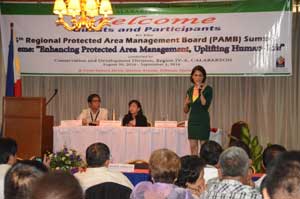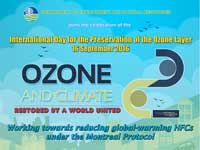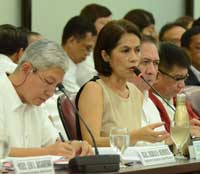LOPEZ BATS FOR STRONGER COMMUNITY INVOLVEMENT IN PROTECTED AREA MANAGEMENT

Environment Secretary Gina Lopez has directed all protected area (PA) managers in the country to ensure that local communities are involved in the all aspects of management of conservation areas known for their natural, ecological and cultural values.
Lopez gave her marching orders during a conference of members of Protected Area Management Boards (PAMBs) in Region 4-A or Calabarzon (Cavite, Laguna, Batangas, Rizal and Quezon) held in Quezon City recently.
"We will involve the people. We cannot help save the environment if we don't partner with the people who live there," Lopez said during the 5th Regional PAMB Summit of Region 4-A attended by around 200 PAMB heads and members.
The environment chief also reminded the PA managers about the commitment of the Department of Environment and Natural Resources (DENR) to social justice by making sure that "the resources of an area are enjoyed by its people."
"Your performance indicator is the quality of life of the people there. I want them to live well. I want them to earn," Lopez told summit participants.
She also bared a plan for a joint venture between the communities and the DENR, through its corporate arm, the Natural Resources Development Corp. or NRDC, to provide livelihood opportunities to people in PA communities.
"We have the money. We can fan out resources there but they (the people) must make money from the economic activities. And then we roll back the earnings. We make some money and we make sure they benefit. We roll it, roll it until we get rid of poverty there," she explained.
Lopez said she wants the DENR to act as a "benevolent entrepreneur" that will help people within and around PAs utilize their resources and improve their lives.
According to DENR-Region 4-A Director Reynulfo Juan, Lopez's directive is a recognition of the critical role played by the community in ensuring the long-term stability and success of a PA.
He also underscored the need for the PAMBs in Calabarzon to revisit their respective management plans in the light of Lopez's plan to refocus the National Greening Program from being a reforestation project to a form of livelihood.
"We have to look at the projects currently implemented in the areas. We will also generate wealth in the host communities," Juan said.
He added: "Whatever development will be undertaken in a PA should benefit the local communities."
There are more than 200 PAs across the country, ranging from large natural parks, landscapes and seascapes, to wildlife and marine life sanctuaries. Seventeen of these conservation areas are located in the Calabarzon.
PAMBs are created pursuant to Republic Act No. 7586 or the National Integrated Protected Areas System (NIPAS) Act of 1992.
Each board is composed of the DENR regional director; the provincial development officer; one representative each from the municipal government, barangay, tribal community; at least three representatives from non-government organizations or local community organizations; and one representative from another department or national government agency involved in PA management. ###
- Details
- Parent Category: News & Events
- Category: Press Releases





